A Standing Ovation for
Santa Barbara’s
Lobero Theatre
The Storied, Historic Theater Celebrates 150 Years
By Cheryl Crabtree | September 15, 2022
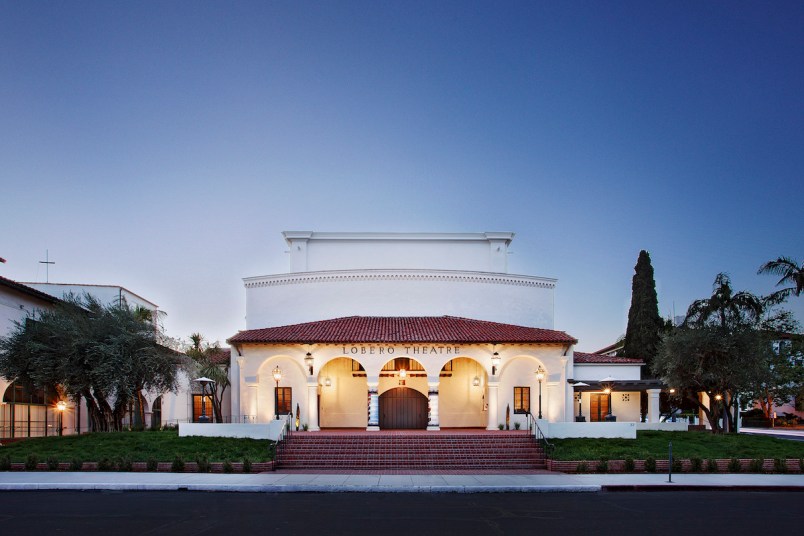
In February 1873, the José Lobero Opera House — a renovated adobe schoolhouse on the corner of Canon Perdido and Anacapa streets — opened to great fanfare. It was the first community playhouse and the second opera house in the state of California. Los Angeles didn’t have an opera house until more than 10 years later.
It was in need of repair by the 1920s, so citizens rallied to build a new theater on the site, and legendary architects George Washington Smith and Lutah Maria Riggs designed a stunning architectural gem. The Lobero Theatre today is a state and city historic landmark and the fourth-oldest performing arts center in the nation. Hundreds of world-class performers, including Paul Robeson, Marian Anderson, Martha Graham, and Mikhail Baryshnikov, have graced the stage over the years.
Since 1873, the Lobero has played a huge role in our region’s cultural life. Artistic and General Director of Opera Santa Barbara Kostis Protopapas, a native of Athens, Greece, previously worked at a number of revered institutions across the U.S., including the Lyric Opera of Chicago, the Los Angeles Opera, and the Santa Fe Opera, so he knows a thing or two about performance spaces. He says the Lobero is “one of Santa Barbara’s great destinations,” not just for the history and setting but its busy schedule. “Almost every night, there is always something going on there, and every single thing, it has a distinct personality,” he said. “I think that any theater that has the amount and the quality of programming that the Lobero has — it’s one of the most important institutions for any community.”
Protopapas also thinks the Lobero is part of Santa Barbara’s lifeblood. “Theaters in general are one of the most important cultural, well, spiritual centers of any community. Theater is one of the most important ways to enrich our lives and … what happens in theaters is a way for us to understand and make sense of ourselves and the world around us that cannot be done anywhere else.”
As singer Joni Mitchell croons, “You don’t know what you got ’til it’s gone.” The importance of theater to Santa Barbara residents became crystal clear when theaters were shut for a year and a half starting in March 2020. “I think everybody felt an enormous piece of their lives missing,” says Protopapas. “You can’t replace theater with TV or with streaming events and things like that. I think everybody, even people who were not necessarily aware of how important theater is in our lives, figured that out pretty quickly in 2020.”
We are fortunate to count several major performance venues in our pocket of paradise, but the Lobero is unique among them. Apart from its colorful history, many producers, performers, and patrons laud the Lobero for its relatively small, intimate space (capacity: 604), which is more suitable for certain productions. Protopapas explains that since 2018, he has presented great but lesser-known repertoire like The Crucible and Importino that wouldn’t make sense at much larger spaces like the Arlington or Granada. “We find that a smaller space like the Lobero provides a much more intimate experience, which is a great thing, a great experience, of course, for both the audience and the performers.”
Jazz vocalist Tierney Sutton, who has performed at the Lobero at least once a year for nearly 20 years, raves about the theater. “It’s my favorite performance space ever; it’s really my favorite. It has this quality … that the great theaters built between the middle of the 19th century and about 1920 or 1930 have, and that includes Carnegie Hall … which is not that huge. But there’s a vibe. The acoustics of the space in and of itself are really beautiful, but there’s also some kind of ‘seasoning,’ it almost feels like, in the walls, because of the variety of music and presentations that have gone on there … it might have been a lecture by Mark Twain, or a first run of Porgy and Bess, or whatever the thing is, so it’s a special space.”
People also praise the work that goes on behind the scenes. Protopapas states, “You are only as good as your stage hands, really, no matter who you are. And I think Lobero has the best…. The Lobero knows how to bring artists and audiences together in incredible experiences.”
Cheers to our beloved Lobero as it turns 150!
The Storied Lobero History
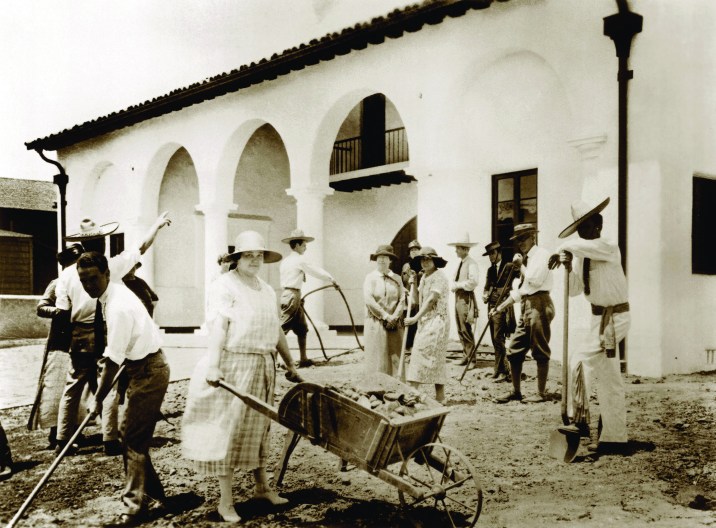
Few people know more details about the Lobero Theatre’s colorful history than Brett Hodges. He fills several important roles at the Lobero Theatre Foundation: historian, chair of the Ovation Celebration, and chair of the Development Committee. We asked him to share, in a nutshell, the historical highlights of the venerable landmark over the years.
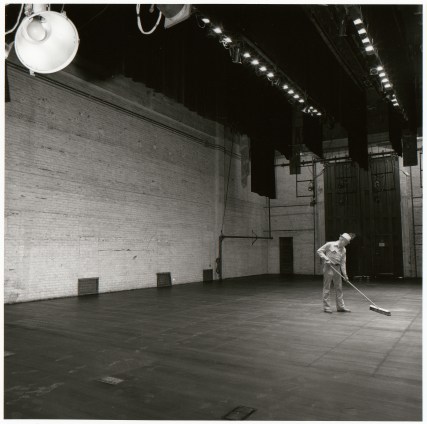
Hodges says the story really began in the 1840s, when a young Italian trombone player named Giuseppe Lobero arrived in San Francisco to take part in the Gold Rush. “Things must not have worked out exactly as he’d hoped, because by the 1850s, Lobero had moved down to Santa Barbara, where he opened a saloon and changed his first name to José. Lobero’s true love was Italian opera, and with the financial help of Colonel William Hollister, Lobero converted an old adobe schoolhouse on the corner of Canon Perdido and Anacapa streets into California’s only opera house south of San Francisco.
“In the years after the end of the Civil War, every town in America — small, medium, and large — felt it needed to have an opera house in order to be seen as legitimate and to be on the map. The fact that Santa Barbara had an opera house before Los Angeles was something that greatly irritated Los Angeles residents. One editorial in the Los Angeles Evening Express stated, ‘Santa Barbara has the building without the people, while we have the people without the building.’ Los Angeles wouldn’t get a comparable performing arts venue until 1884.
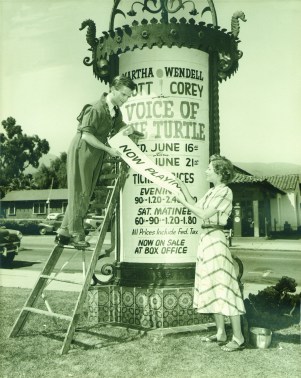
“The story of the Lobero is the story of Santa Barbara. The Lobero Opera House days (1873-1923) certainly can be seen as Santa Barbara’s coming-of-age. A sleepy, physically isolated town gets California’s second opera house, which immediately becomes the center of most civic and cultural life.” The opera house hosted graduations, fundraisers, exhibitions, and political rallies, as well as touring vaudeville, drama, and light opera companies, acrobatic shows, séances, and magic performances.
“The caliber of entertainment improved when the railroad arrived in town in 1887. World-famous celebrities come to Santa Barbara to perform at the Lobero: actors Lionel Barrymore and Lillie Langtry, comedian W. C. Fields, world champion boxer John L. Sullivan, John Philip Sousa and his band, and women’s rights activist Susan B. Anthony.
“When the new Lobero Theatre opened in 1924, Santa Barbara finally had a first-class community theater that could also accommodate world-class talent. Unlike the vast majority of America’s 19th-century opera houses, which either shut down or changed into movie theaters in the 1920s, the Lobero survived as a performing arts venue.”
Lobero Highlights over the Decades
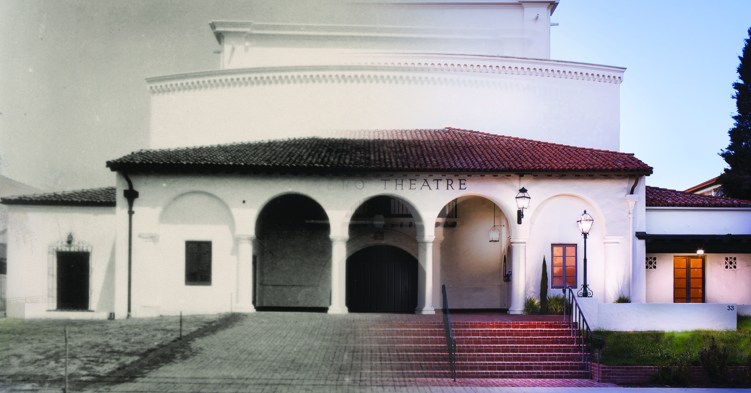
| Credit: Courtesy
Thousands of performers have graced the Lobero main stage over its 150-year existence. Brett Hodges provided a condensed timeline of major events over the years since 1873. “I’ve tried to identify events which do a good job of representing the Lobero (and Santa Barbara) for each decade,” he explains.
1870s
February 22, 1873: Lobero’s Opera House officially opens with a “Grand Italian Operatic Concert” directed by Giuseppe (José) Lobero.
1880s
December 12, 1889: 24-year-old Flora Batson performs on December 12, 1889.
Batson was a popular and well-known Black concert singer, nicknamed “The Double-Voiced Queen of Song” because of her soprano-baritone range. In 1889, she took the stage at the Lobero Opera House, and although it was a rainy evening, local newspapers reported that “the crowd was larger than anticipated and those who ventured through the rain to hear the concert were rewarded magnificently.” In 1887, just two years earlier, Batson had married John Bergen, a white man, who remained her husband and her manager until his death in 1896. Their marriage made headlines and challenged society at the time, but the Lobero welcomed Batson and presented her as one of the top singers of her time and culture. Batson continued to sing and enjoyed great success nationally and internationally.
1890s
January 13-15, 1896: The Boy Wizard, the “world’s invincible magnetic healer who cures the deaf, blind, sick, lame, rheumatic, and paralytic by the laying on of hands,” commands the stage footlights for three days — arguably one of the wildest, craziest, most bizarre performances to take place at the venue.
October 17, 1896: Women’s rights activist Susan B. Anthony speaks to a full house. Hundreds were turned away at the door.
July 16, 1897: The Lobero presents Santa Barbara’s first movie — the silent film Edison’s Vitascope, with 20 short features, including “May Irwin’s Famous Kissing Scene,” a first in international film history.
1900s
March 30, 1903: William Gillette performs Sherlock Holmes. John D. Rockefeller, J.P. Morgan, and Andrew Carnegie (all in town for the opening of the grand Potter Hotel) were in the audience, which represented “more of the nation’s wealth than was ever collected in any building save the Metropolitan Opera in New York.”
1910s
The aging Lobero Opera House is in disrepair, and quality acts are now playing at the Potter Theatre, which opened in 1907. The Lobero hosts numerous touring musical comedy and vaudeville troupes, temperance (anti-alcohol) speakers, and political rallies.
1920s
August 4, 1924: The new Lobero Theatre (designed by Lutah Maria Riggs and George Washington Smith) opens in tandem with Santa Barbara’s first Old Spanish Days Fiesta.
America’s “Little Theater Movement” emphasizes quality community productions (in contrast to traditional melodramas and vaudeville), and the newly rebuilt Lobero Theatre earns a reputation as one of the most architecturally important and vibrant community theaters in the country.
August 13, 1926: Will Morrissey’s Music Hall Revue comes to town for the Lobero Theatre’s first (and likely only) “midnight matinee,” featuring the talented 23-year-old jazz crooner Bing Crosby.
June 15, 1929: Two years before he starred in the world-famous classic film, Bela Lugosi plays Dracula on stage.
1930s
Many important 20th-century classical musicians appear on the Lobero stage, including Jascha Heifetz, Vladimir Horowitz, Sergei Rachmaninoff, Gregor Piatigorsky, Leopold Stokowski, Igor Stravinsky, Isaac Stern, and Arthur Rubinstein.
April 1, 1938: Actor Joseph Greenwald dies on stage from a heart attack just as he said the line “…all my life.” The audience thought it was just part of the plot, but Greenwald’s collapse was genuine.
1940s
The Lobero becomes an important theater preview destination. Hollywood producers like Sid Grauman and David O. Selznick preferred to show their productions to sophisticated Santa Barbara audiences, known for their good sense of humor, before opening in Los Angeles or on the East Coast.
Theater performances at the Lobero helped jump-start the careers of Hollywood legends like Ingrid Bergman, Clark Gable, Humphrey Bogart, Bing Crosby, Lucille Ball, and Betty Grable.
July 30, 1941: Brett Hodges’s favorite event: “Canon Perdido is blocked off; klieg lights are shooting up into the sky. Ingrid Bergman is on stage in a preview of the Eugene O’Neill play Anna Christie. In the audience are O’Neill and Hollywood’s elite like Charlie Chaplin, Alfred Hitchcock, Lana Turner, Ronald Colman. What’s especially poignant is that four months later, Pearl Harbor would be attacked and the Hollywood Golden Age would come to an end.”
December 31, 1947: Several months after her Lobero appearance in Dream Girl, Lucille Ball was cast in a weekly radio comedy series for CBS Radio. My Favorite Husband was so successful that CBS asked her to develop it for television, which she agreed to do if she could cast her real-life husband as her co-star. The couple’s Desilu Productions developed the series, which premiered in 1951 as I Love Lucy.
1950s
The Lobero started to become an influential jazz venue.
March 1953: Legendary American jazz pianist and composer Dave Brubeck and his All Stars perform. In the ensuing decades, the Lobero helps popularize the “West Coast” style of jazz (also known as “cool jazz”). Dizzy Gillespie, Herbie Hancock, and jazz vocalists like Betty Carter, Shirley Horn, and Sarah Vaughan are some of the jazz legends who have appeared.
1960s
The Lobero struggles for relevance while presenting summer stock and musical theater. At the same time, the Lobero begins to present a few important folk, jazz, and blues artists, including Joan Baez, Odetta, Sarah Vaughan, and Miriam Makeba.
1970s
Adventure documentary films — surfing, skiing, sailing, diving — fill the Lobero calendar.
1980s
The Lobero is the heart of Santa Barbara’s New Age movement with SBCC Adult Education’s popular Mind & Supermind lecture series.
1990s
The Sings Like Hell series positions the Lobero as a noteworthy venue for Americana, folk, and country indie singer/songwriters. Randy Newman, Richard Thompson, Roger McGuinn, Jesse Winchester, Aimee Mann, Marshall Crenshaw, Patty Griffin, Shawn Colvin, Joan Armatrading, David Crosby, Tracy Chapman, Gillian Welch, and T Bone Burnett perform.
2000s
The Jazz at the Lobero series — produced by Steven Cloud and David Asbell — begins and places the Lobero at the forefront of the jazz scene. Performers include Wynton Marsalis, Wayne Shorter, Dianne Reeves, and Esperanza Spalding. DownBeat magazine lists the Lobero as one of the world’s best jazz venues.
2010s
The Lobero tradition of being an important showcase for indie singer/songwriters continues.
2022
Back in business and raring to go after the pandemic shutdowns, in summer 2022, the Lobero hosted Amos Lee, Corinne Bailey Rae, Leo Kottke, The Blasters with Dave Alvin, Hot Tuna Acoustic, and Tab Benoit.
Fall 2022: The Ovation Celebration Begins
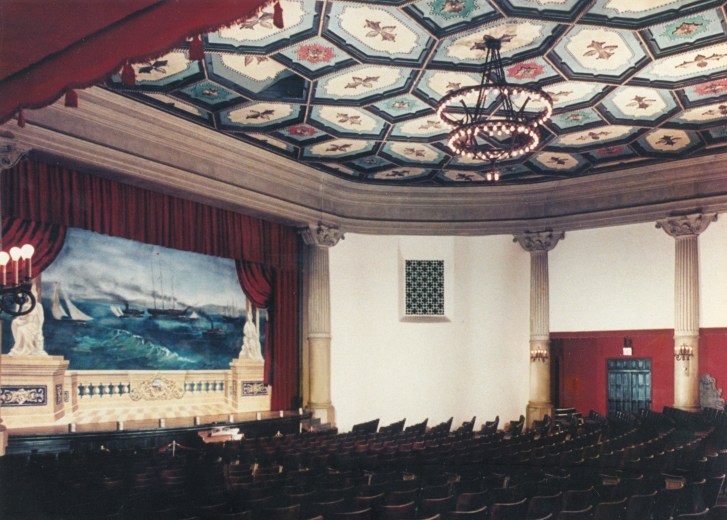
| Credit: Courtesy
The Lobero Foundation is presenting an action-packed series of events to commemorate its 150th anniversary season. Board member Brett Hodges says the plans will include all of the local arts organizations and artists who have performed at the Lobero as well as parties and receptions and some very special 150th birthday concerts. He adds that another important aspect of the Ovation Celebration is the foundation’s campaign to raise additional endowment funds “to ensure that the Lobero will remain vital and vibrant for another 150 years.”
Lobero Live 2022-2023
Season Lineup
Suzanne Vega: Wednesday, September 28
Get the Led Out: Friday, September 30
The Wallflowers: Friday, October 7
Lobero Chamber Music Project: Tuesday, October 18
Andrew Duhon and Haley Johnsen: Friday, October 28
Go to Hale: Saturday, November 5
Django Festival All-Stars: Tuesday, November 15
The Immediate Family: Sunday, November 20
Los Lobos: Friday-Saturday, January 20-21, 2023
Ladysmith Black Mambazo: Thursday, March 2, 2023
Preservation Hall Jazz Band: Friday, March 3, 2023
Los Romeros / The Romeros Guitar Quartet, presented with Community Arts Music Association: Saturday, March 4, 2023
It’s Magic! Lance Burton and Friends: Sunday, March 19, 2023
Lobero Theatre Chamber Music Project: Friday-Sunday, May 5-7, 2023
Stay tuned as more events are added to the schedule in the coming months.
More than a Venue — a Community Treasure
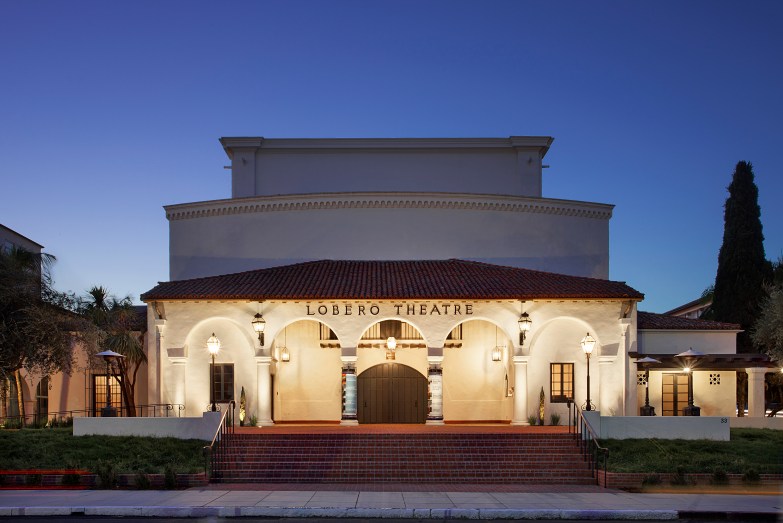
The Lobero Theatre is much more than an architectural landmark. Many say it’s a community treasure that reflects Santa Barbara’s heart and soul. Its stage isn’t meant just for celebrities; it also provides a platform for local artists and regional organizations, including Opera Santa Barbara, CAMA, Flamenco Arts Festival, State Street Ballet, and other local groups. Here we spotlight three longtime Lobero producers and performers who have worked for many years to connect arts and culture with residents.
Vibiana Pizano
Flamenco Arts Festival Founder and Director
The Flamenco Arts Festival held its first event in 2000, and they have been producing their main stage events at the Lobero ever since. Pizano thinks the Lobero is important because it’s been part of the city’s history and arts communities — including the Spanish arts — since the beginning. “There are a lot of major promoters who come to the Lobero to produce their shows, but the one special thing about the Lobero is that it’s open to local arts organizations, small and large…. The Lobero Theatre is a real treasure, and the whole staff there has done a wonderful job of maintaining the theater and keeping it open for the community. So I want to thank them for that.”
Rod Lathim
Playwright and Director
Rod Lathim, a local playwright/producer/director/artist, says, “The Lobero is where it all started with me.” In 1979, he founded Access Theatre, which became a unique and heralded professional touring company that focused on disability and related themes. It served as a national model of accessibility for 18 years. “The Lobero was always our home base,” says Lathim, adding that many innovations, including signing and visual audio description, were created and tested at the Lobero. “All that started on the stage boards at the Lobero,” says Lathim.
Tierney Sutton
Jazz Vocalist
Tierney Sutton has performed at the Lobero for nearly 20 years. She was the Jazz Artist in Residence from 2012-2015 and pursued community outreach on the theater’s behalf, doing improvisational singing with after-school and other programs. “I was really struck by the beauty … and the diversity of the community, which I didn’t realize,” she reflects.
Sutton praises the Lobero’s educational outreach efforts. “I think that the Lobero presents art that is not necessarily the mainstream art, but they always present something that is very high-quality. I think youth really need to be exposed to as many different kinds of things as they can. I didn’t discover jazz until I was 19 years old, and it probably would have changed my life sooner, had I been exposed sooner, and so I think having a resource like the Lobero in a community that challenges assumptions and challenges tastes with presenting things that they know maybe people are unfamiliar with but are going to be compelling and inspiring … you can’t measure the importance of that.”

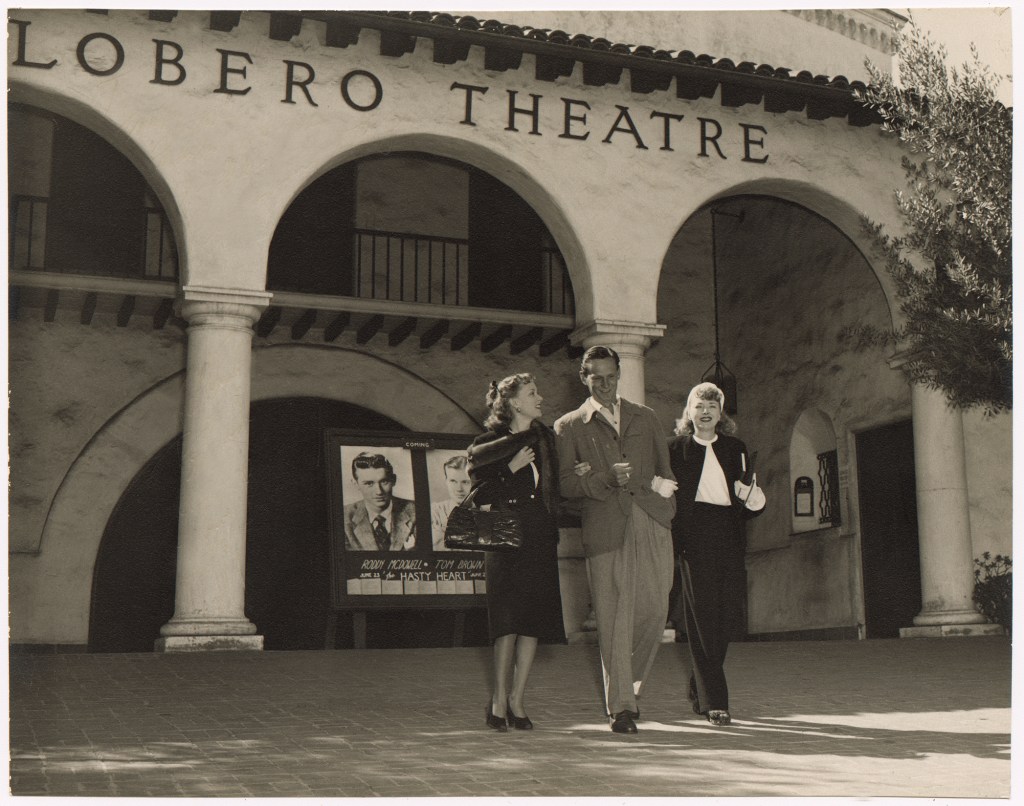
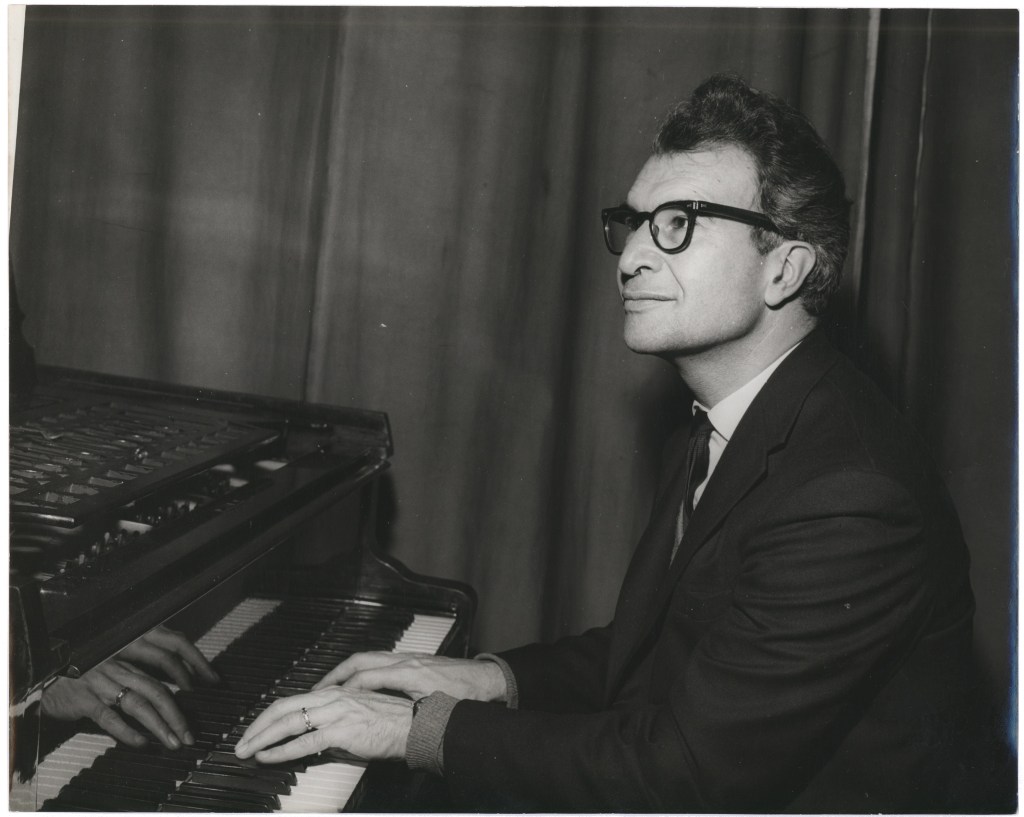
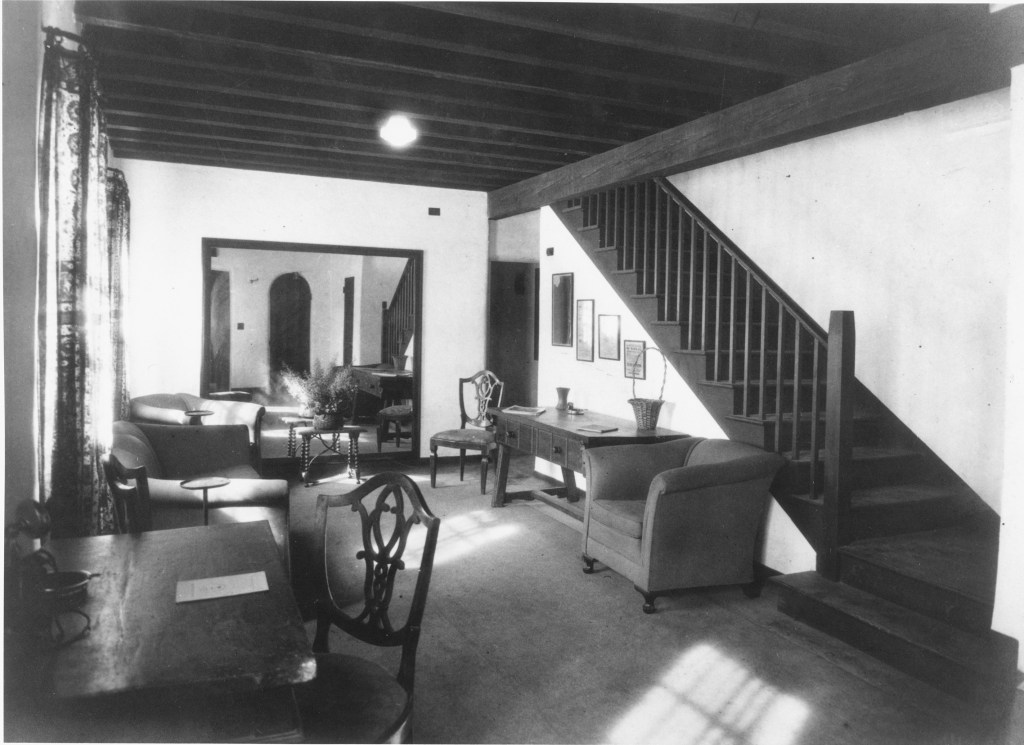
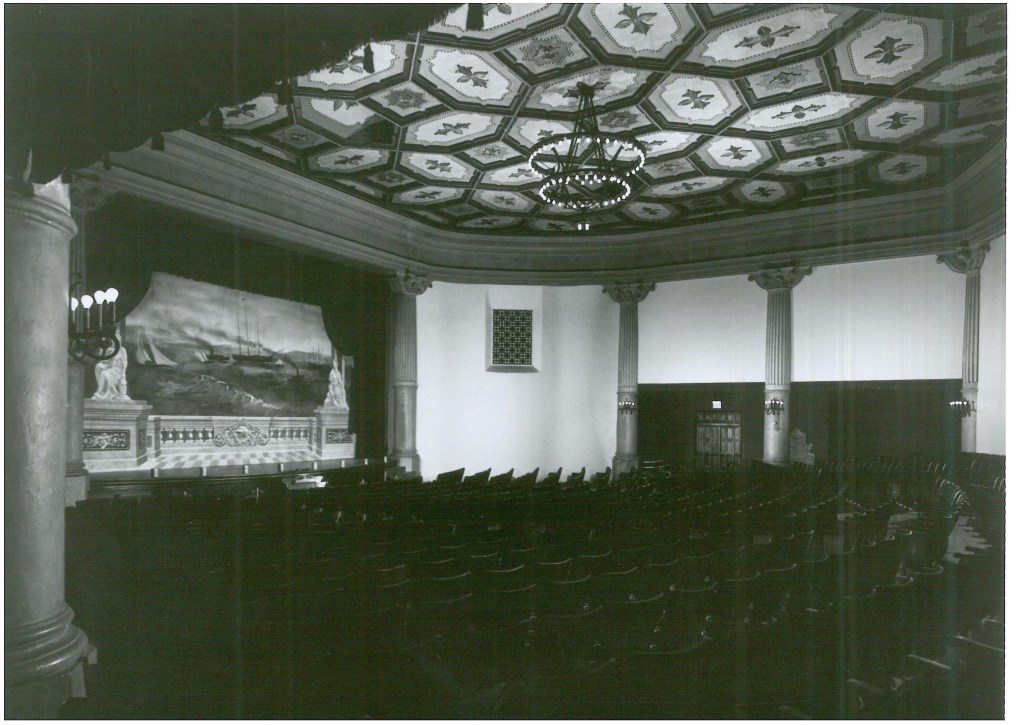
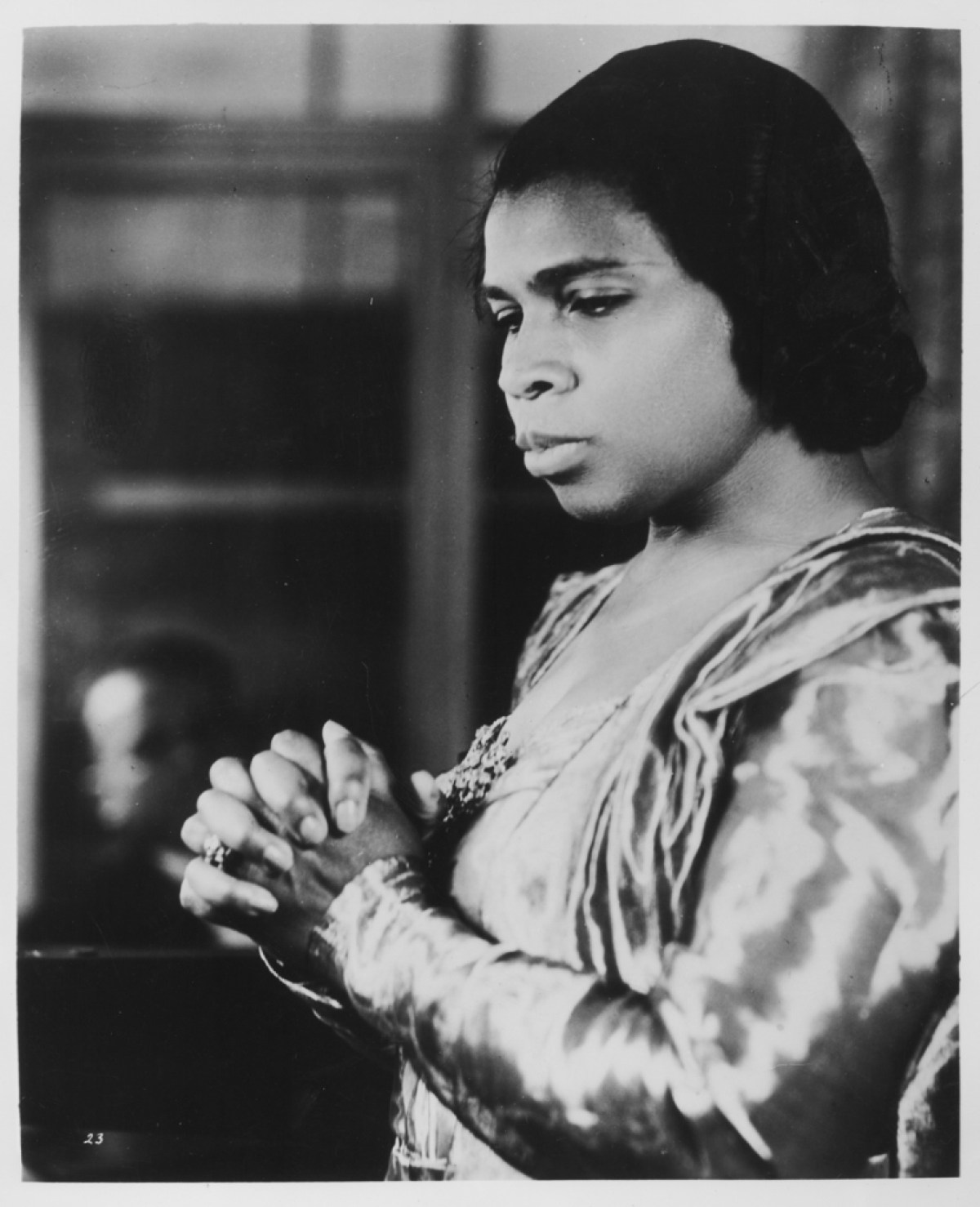
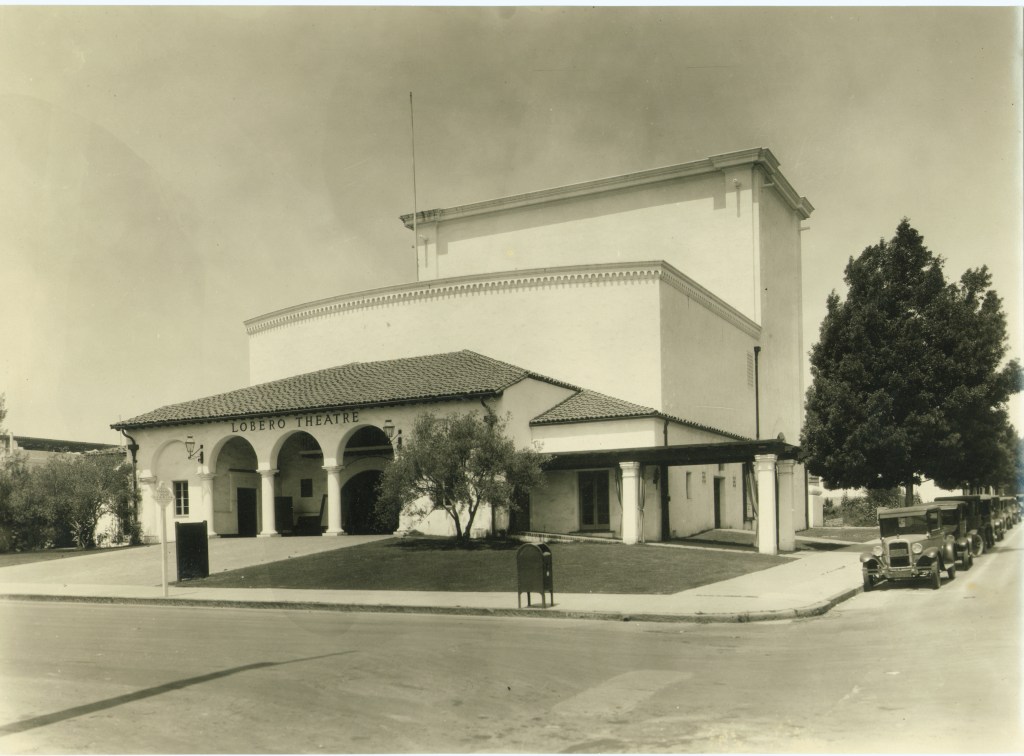
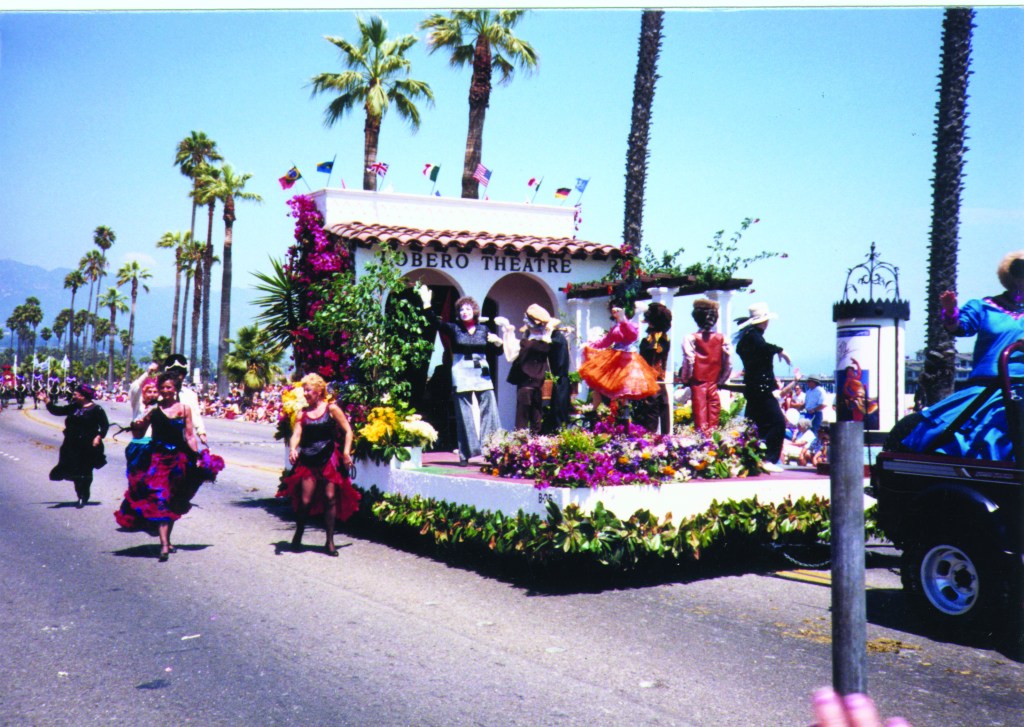
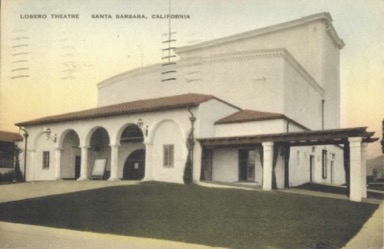
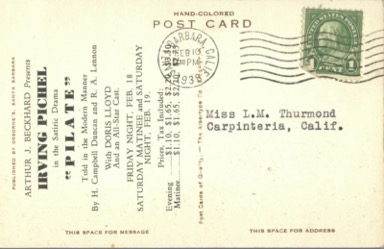



You must be logged in to post a comment.